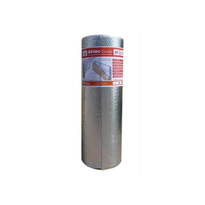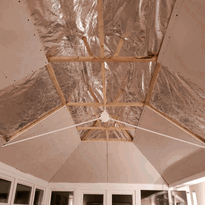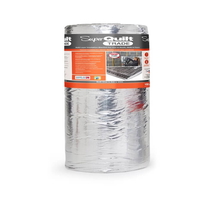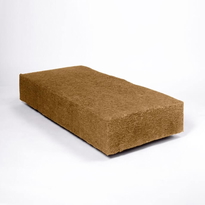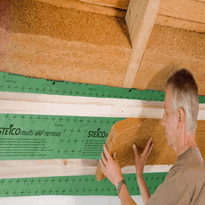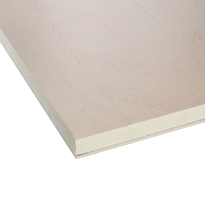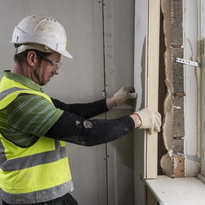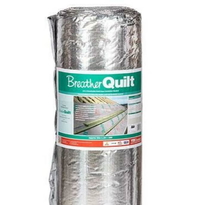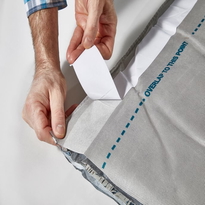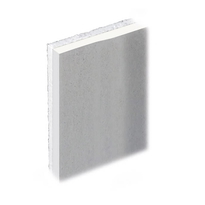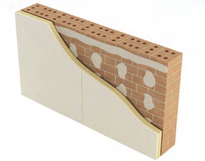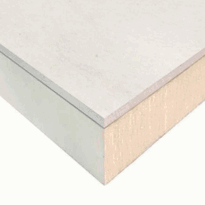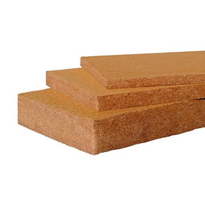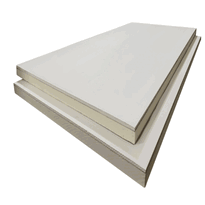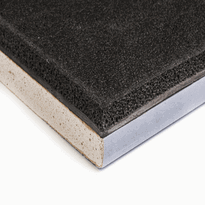Exploring Different Types of Garage Wall Insulation
Selecting the appropriate type of garage wall insulation is vital for achieving effective thermal performance, energy efficiency, and suitability for specific structural conditions. Here are some common options suitable for UK garages:
Fibreglass Insulation
Fibreglass insulation, available in rolls or batts, is a popular choice due to its affordability and straightforward installation. It works well in exposed wall cavities and provides reliable thermal insulation.
However, installers should take protective measures during handling to prevent skin and respiratory irritation.
Cellulose Insulation
Made from recycled materials, cellulose insulation offers good thermal insulation properties and is considered eco-friendly.
It's suitable for retrofit projects within existing walls.
Nonetheless, it's less ideal for areas prone to moisture and damp conditions, as it can absorb water, leading to potential issues.
Foam Sealant
Foam sealants, including open and closed cell variants, offer excellent air sealing capabilities and high thermal performance.
They can help reduce drafts and improve energy efficiency.
Professional installation is recommended to ensure correct application and avoid over-expansion that could damage structures.
Rigid Foam Boards
Rigid foam boards are space-efficient, durable, and resistant to moisture, making them suitable for garages with limited space or those exposed to high humidity.
They can be cut to fit precisely between structural elements, providing effective insulation without taking up much room.
Each insulation type provides unique benefits depending on the garage’s structural requirements and environmental considerations.
Choosing the right material can enhance comfort, reduce energy costs, and protect structural integrity over time.
Benefits of Proper Insulation for Your Garage Walls
Proper insulation of garage walls offers a range of tangible benefits that significantly improve the functionality, efficiency, and longevity of the space. It helps maintain a consistent indoor temperature by reducing heat loss during the winter months and heat gain in summer, which in turn lowers energy consumption and utility bills. Many insulation types contain recycled content, enhancing eco-friendliness. Well-installed insulation minimises unnecessary strain on heating and cooling systems, especially in regions with extreme weather, thereby safeguarding stored items and extending the lifespan of the garage structure. Additionally, insulation prevents heat transfer between the garage and neighbouring living spaces, enhancing overall home energy efficiency. It also plays a key role in controlling moisture levels by stabilising temperature and humidity, reducing the risk of mould, mildew, and rust that can compromise the safety and condition of stored belongings. Proper insulation thus contributes to a healthier, more energy-efficient, and durable garage environment, providing comfort and protection all year round.
Factors to Consider When Insulating Garage Walls
When considering insulation options for garage walls, it's important to evaluate several key factors that influence the effectiveness, cost, and suitability of different materials. The type of insulation chosen, such as fibre glass, rock wool, foam board, or spray foam, depends on specific needs, including fire resistance, eco-friendliness, and air sealing capabilities. [Checking existing insulation](https://www.quitcarbon.com/blog/insulating-your-garage-pros-cons-benefits-cost) is a crucial first step, as it can influence the choice of new materials and installation methods. Additionally, the garage's structure—whether it's attached or detached—and local climate conditions significantly impact insulation choices. Existing insulation, building regulations, and budget constraints further inform options by affecting installation methods and material compatibility. Understanding local K-value and U-value requirements ensures compliance with regulations and helps maximise energy efficiency. Careful assessment of these factors is crucial to ensure that insulation installation delivers high thermal performance, safety, and affordability, tailored specifically to the garage and its environment.
Step-by-Step Guide to Installing Garage Wall Insulation
Installing garage wall insulation requires a systematic approach that begins with meticulous preparation of the space to ensure safety, effectiveness, and ease of installation.
First, the walls must be cleared, removing tools, equipment, and plasterboard to expose the timber studs. Any obstructions such as pipes or wiring should be identified and carefully moved away, while dirt and debris inside the stud cavities need to be thoroughly cleared to allow smooth installation. Properly preparing the space is essential to ensure that insulation can be installed effectively and safely. Conduct a comprehensive inspection for mould and dispose of hazardous materials responsibly.
Next, inspect the walls for any gaps or cracks. Seal these with expanding foam or quality sealant such as silicone or acrylic caulk and allow sufficient time for the sealant to cure fully.
Proper insulation—such as fibreglass batts, foam boards, or reflective materials—must be selected based on the specific requirements related to moisture control and thermal performance.
When installing the insulation, ensure it fits snugly between the studs without compression, maintaining its insulating properties.
Carefully cut the material to size where necessary, and press it into place, avoiding any gaps or compression that could reduce effectiveness.
Finally, finish the walls by covering the insulation with plasterboard or paneling. Secure the covering firmly, seal all joints with suitable tape or filler, and perform a thorough inspection to confirm the installation is complete, neat, and properly insulated.
Following these steps will help you achieve a safe, efficient, and lasting insulation system for your garage walls.
Cost-Effective Solutions and Environmentally Friendly Options
Cost-effective and environmentally friendly insulation options provide practical solutions for upgrading garage walls while minimising expenses and environmental impact.
Fibreglass insulation remains the most affordable and readily available choice, often sold in precut batts tailored for garage studs.
Foam board insulation offers a higher thermal resistance per millimetre, making it a cost-efficient alternative that enhances thermal performance.
Choosing foam board or fibreglass insulation can help create a more energy-efficient garage space without exceeding your budget.
These options aren't only economical but also available in varieties that help reduce environmental impact, such as those with recycled content or environmentally conscious manufacturing processes.
While some insulation types may require a higher initial investment, their ability to improve insulation efficiency can lead to lower energy costs over time.
Selecting these environmentally friendly solutions allows homeowners to balance budget constraints with sustainability goals, helping to create a more energy-efficient garage that aligns with both community and environmental values. The availability of eco-friendly insulation materials has increased significantly in recent years, making sustainable options more accessible to homeowners.
Conclusion
In summary, selecting appropriate types of insulation, considering installation methods, and evaluating cost and environmental factors are essential steps to effectively insulate garage walls. Proper insulation enhances energy efficiency, helps maintain consistent interior temperatures, and improves overall comfort and durability. Following detailed guidance ensures a correct, safe installation process that maximises insulation performance and longevity. Careful planning and well-informed choices ultimately deliver a functional, efficient, and sustainable insulation system for garage walls.

